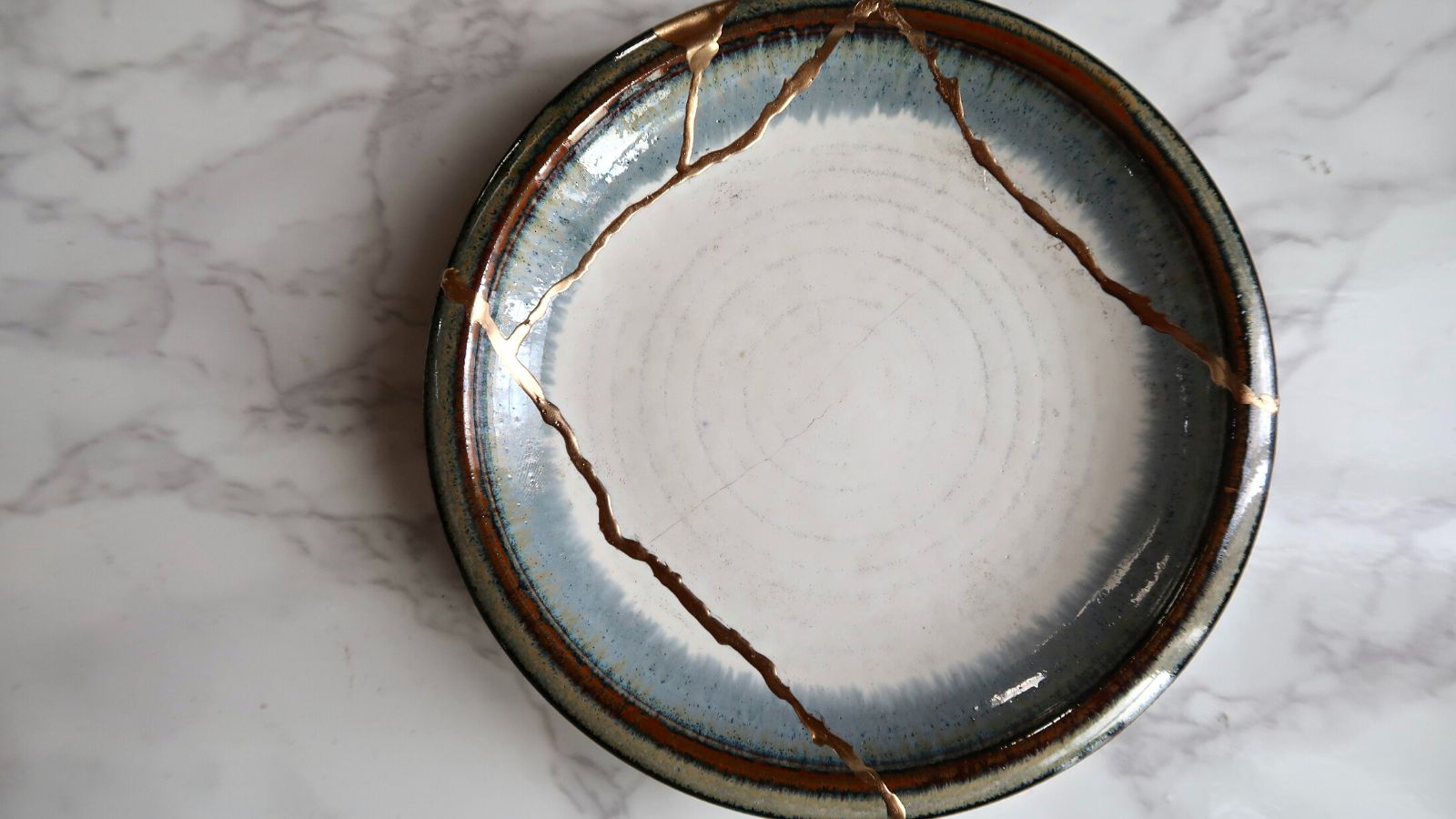How breaking my vase made it more valuable – here's how I embraced the Japanese art of kintsugi
The ancient Japanese art of kintsugi not only helped me be less wasteful but also gave me a new outlook on how I decorate my home


I admit that I am a bit of a clutz. Whether I am somehow dropping my plate when walking back to the kitchen, knocking cups off of table corners, or (let's face it) stupidly trying to balance too many things on my arm at once when bringing all the crockery down I have accumulated in my bedroom, I am, more often than not, left cleaning up smashed dinnerware.
I used to beat myself up about it, after all, I am a grown adult and I really shouldn't be going through as many plates as I do. The real turning point was when I managed to break my favorite vase and finally decided to try my hand at fixing it as opposed to admitting defeat and throwing it away. That is when I stumbled on kintsugi, an ancient Japanese art form that was designed exactly for mending broken things.
Little did I know that this simple practice would completely change the way I looked at what it is I put and keep in my home, and what I throw away. This is how I embraced kintsugi and why it is now one of my favorite DIY projects.

Kintsugi, meaning 'golden seams', is all about mending broken things with gold to embrace their imperfections and honor their history. I was so used to trying to put broken things back together with some clear superglue and hide the break that completely altering my belongings was something I was a little uneasy about at first.
I think that is a very Western approach to have to our personal belongings, especially when it comes to our decorating ideas, look brand new and shiny all of the time.
Instead, kintsugi makes something that was once broken even more beautiful, it adds character to a home not only by embracing a piece's history but by also producing an unusual, eye-catching feature. Whether it is a once-broken plate now placed on display or newly gold-veined floor tiles, the golden slithers look purposeful and demand attention. It has fundamentally changed the way I look at my home and what it is I use to decorate it.

Kintsugi is easily one of my favorite ways to be sustainable at home as it teaches me to embrace taking things slowly and avoid over-consuming in homeware stores.
Design expertise in your inbox – from inspiring decorating ideas and beautiful celebrity homes to practical gardening advice and shopping round-ups.
I bought a relatively simple kintsugi kit much like this one on Amazon to get me started. It was not the easiest home project I had taken on but, as with all things, it takes practice to get it perfect. Although in an art like this the imperfection of your first few tries only adds to the finished piece's charm and appeal.
I started by lightly sanding the edges of my vase to remove any of the sharp edges before using the fine stick to layer the adhesive over the broken edges and pushing pieces together. It is best to arrange your pieces on the table in the order you need to put them back together I found.
I then sprinkled the golden powder over the still-setting adhesive, not bothering to clean up any liquid adhesive that seeped out of the cracks. After doing this around the entirety of the vase, I left it to set and, about an hour later, used a gentle damp cloth to remove any excess dust that had not adhered. The hardest bit was using extra adhesive to fill gaps left behind by smaller chips that I could not salvage the parts for. The final piece looked like the most luxurious antique I could have hoped for, something I reveled in as someone who loves decorating with antiques generally.
Although I will likely not be able to fix every single thing I break around my home with kintsugi, I don't berate myself half as much when I do accidentally drop a mug anymore.
Maybe mending my small vase taught me something about embracing my own clumsy imperfections after all.
What does kintsugi symbolize?
Kintsugi is an ancient Japanese art of putting broken pottery back together with a golden adhesive, rather than disposing of it or using a clear glue to hide the cracks. The practice is designed as a metaphor for embracing imperfections and flaws, rather than hiding them away.
Does kintsugi use real gold?
While it is possible to use real gold in the kintsugi process, most of the time kintsugi work uses a blend of brass, copper, and zinc for a more durable yet realistic effect. What is more, using this alloy is cheaper than real gold making the practice more accessible.

Chiana has been at Homes & Gardens for two years and is our resident 'queen' of non-toxic living. She spends most of her time producing content for the Solved section of the website, helping readers get the most out of their homes through clever decluttering, cleaning, and tidying tips. She was named one of Fixr's top home improvement journalists in 2024.